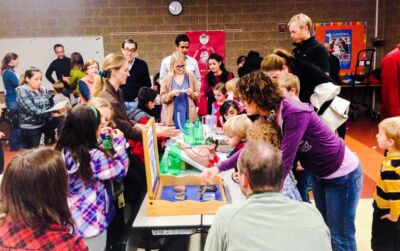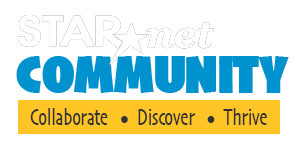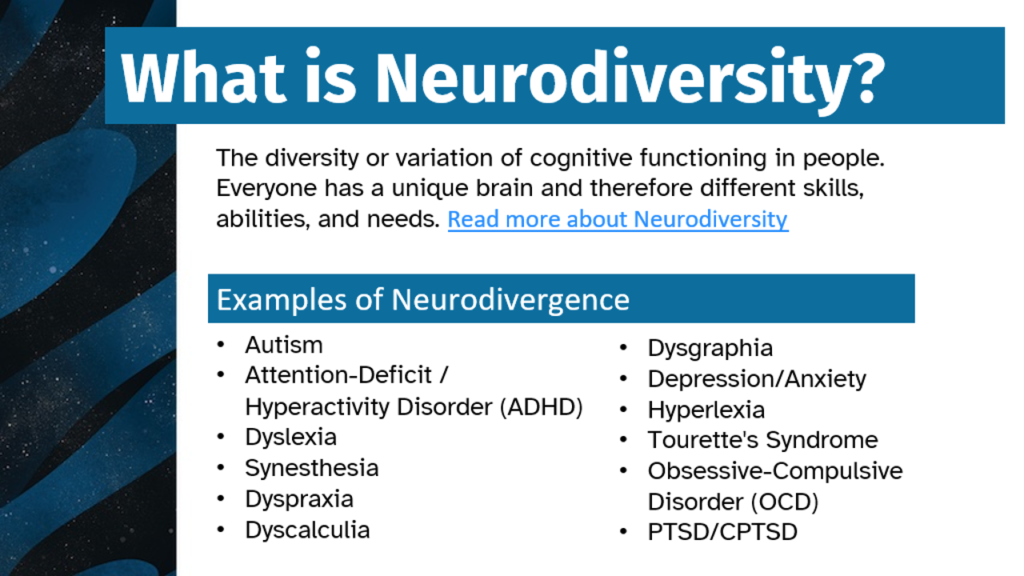Findings from the Colorado Health Program Survey

April 22,2022
Written by Paul B. Dusenbery, Ph.D.
Senior Educator Emeritus
Space Science Institute
Overview
The Novel Coronavirus (COVID-19) pandemic has caused a seismic paradigm shift. It has changed how people socialize, communicate, work, eat, and care for one another. It revealed the need for an infrastructure at the ready to mobilize public health resources to respond to future unexpected health challenges.
COVID-19 is not the first health crises we have seen that is wrought with misinformation and lack of effective educational outreach resources to help communities make appropriate science-based decisions. Examples include the Spanish Flu of 1918 and the AIDS epidemic of the 1980’s. We have seen Ebola epidemics in other countries that hit too close to home. In all of these, disparities in health education and the delivery of health resources and information made our national response less effective. While there are many excellent sources of information (e.g., from NIH, CDC, public health departments, and universities) about how to keep people healthy during pandemics, like COVID-19, information alone is not sufficient. Findings from the Colorado Library Health Program Survey demonstrate that public libraries are interested in collaborating with community-based organizations to improve access to health resources and enhance health literacy.
Key Findings: Colorado Library Health Survey
The Colorado Area Health Education Center (COAHEC) in partnership with the Anschutz Medical Campus, the Colorado State Library, and STAR Net, released a twelve question survey on March 16, 2021 asking Colorado public library staff to provide information about their interest (and their community’s interest) in a variety of health related concerns. It also ascertained their willingness to join a trusted network of health professionals that would disseminate health information and learning opportunities to all communities in Colorado. The goal of this learning network would be to address chronic health issues and emerging crises in medicine and public health. The survey was open for a 2-week period that ended on March 30, 2021. A total of 64 library staff from public libraries in urban, suburban, and rural communities in Colorado completed the survey. Survey results were published in the January/February 2022 issue of the Informal Learning Review (Dusenbery et al., 2022).
Key findings from the survey are listed below:
- The survey sample is representative of the community types across Colorado. When asked to define the type of community where their library is located, 52% identified their community as rural, suburban/rural, or resort. Urban, urban/suburban, and suburban communities totaled 43%.
- Most respondents (61%) identified themselves as a library director or manager. This category included associate directors, branch managers, digital services managers, and supervisors. The next largest group was adult services staff (19%) followed by youth services staff (13%).
- Survey responses reflect the burning need for communities to provide critical services (such as food, shelter, and healthcare) and programs for their underserved and underrepresented populations. Groups under-utilizing library services before and during the COVID-19 pandemic included: seniors, homeless populations, Spanish speaking adults, teens, working adults and families, and low-income members.
- There was broad interest across many health topics (21) that respondents felt would be important for their library and community to know more about. These included Access to Healthcare (83%), Health Insurance Information (68%), Health Literacy (70%), Aging (67%), Child Health (62%), Vaccinations (65%), Lifestyle (72%), Substance Abuse (68%), and Mental Health (90%).
- Libraries were interested in a variety of health program types (e.g., exhibits, screenings, kits, workshops) have high interest levels in the combined Interested/Very Interested categories. Those that are substantially greater than 50% include hands-on exhibits at 65% (such as Discover Health described in Dusenbery et al., 2022); health fairs at 65%; health screenings at 71%; story time at 65%; hands-on workshops at 76%; circulating kits at 63%; and teen science cafes at 75%.
- Prior to the pandemic, 60% of the respondents said that their library offered health-related programs and activities. This survey found that a large percentage (81%) of the respondents were interested or very interested in providing health programs with partners such as public health organizations, hospitals, and K-12 schools. There was overwhelming support (92%) for libraries and their health organization partners to be able to quickly respond to new public health crises when they arise.
The Full Report can be found here.
Health Program Resources
- The Association of Science and Technology Centers (ASTC) is leading a national COVID awareness program called Communities for Immunity. It’s a partnership with the Institute of Museum and Library Services, the American Alliance of Museums, and the Network of the National Library of Medicine, with support from the Centers for Disease Control and Prevention. Collaborators include the American Library Association, the Association of African American Museums, the Association of Children’s Museums, the Association for Rural and Small Libraries, the Association of Tribal Archives, Libraries, and Museums, and the Urban Libraries Council. Its focus is on supporting the work of museums and libraries in engaging their communities in improving COVID-19 vaccine acceptance and confidence. The link above has a list of resources, funding opportunities, and an invitation to join the program’s community of practice.
- The Public Library Association published Health Happens in Libraries Part 1: Libraries Promote Health Literacy (Morris, 2016) to draw attention to this important topic.
- OCLC’s WebJunction offers a variety of health resources (such as webinars and infographics) that can assist libraries (and other ISE organizations) interested in building an effective health literacy program. See its Health Happens in Libraries initiative for help in getting started.
- ALA’s Libraries Transform initiative, in partnership with The National Network of Libraries of Medicine, developed a Health Literacy Toolkit that includes a variety of health literacy promotional resources.
Don’t forget that October is Health Literacy Month. Get involved!
Final Thoughts
Disparities in health education and the delivery of health resources and information to vulnerable populations are at the crux of many of the health challenges our country faces. On a national level, it is far from certain when public libraries, or our nation and world, will return to a new “normal.” Challenges, such as digital divide inequalities, homelessness, access to affordable healthcare services, will need to be addressed locally as well as nationally.
This survey showed that library staff in Colorado (and likely nationwide) are very interested in establishing a robust health literacy program that covers all age bands from Pre-K to seniors and are enthusiastic about partnering with community-based organizations who can help them achieve long-term success. Library respondents were also interested in establishing a Health Response Network that included libraries, public health departments, universities/community colleges, and other community-based organizations. Are you interested?
Share what your library is doing to enhance health literacy in your community in the comment section below.





Responses